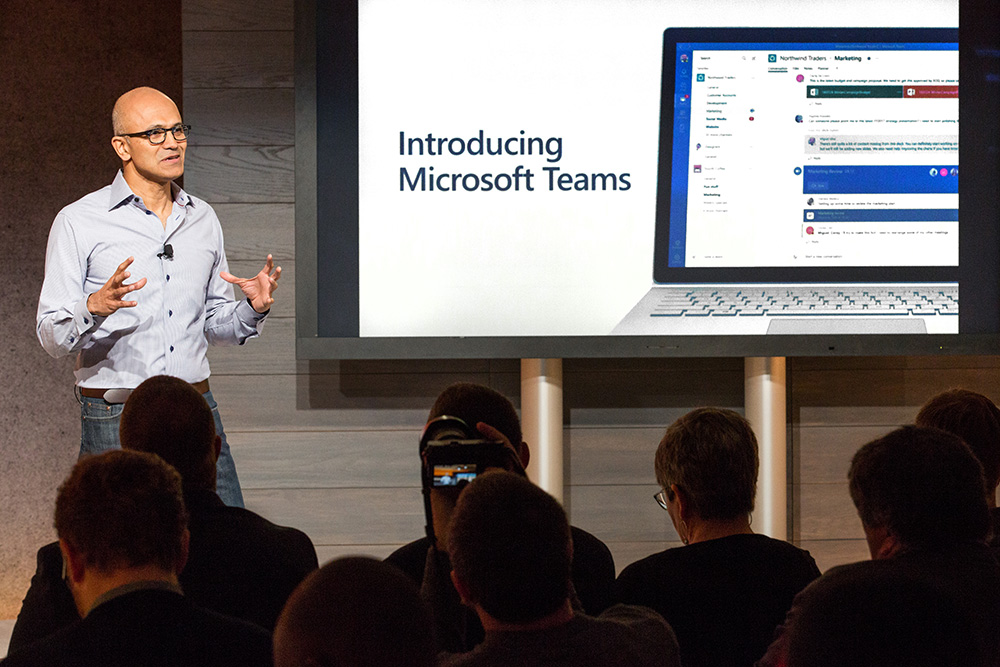Slack is arguably the most popular collaboration tool out in the market right now. Many digital agencies, startups, and other businesses are already using Slack and are loving it. Founded in 2009, Slack emerged as a disruptor in the office communication market that was previously dominated by Skype. Slack has managed to raise a massive $1.2 billion off over 11 funding rounds and is valued at an impressive $7.1 billion. These numbers speak for themselves, but Microsoft’s collaboration endeavor, Teams, is not letting Slack sit back and enjoy the spoils. Teams didn’t hit the scene until very recently, but since its launch, it has emerged as a threat to Slack’s reign over the collaboration market.
Feature comparison

When Microsoft rolled out Teams to compete with Slack, Teams lacked many features that made Slack popular. Features like document imaging, document indexing, mobile integration, and single sign made Slack more popular and arguably the most unique and rare tool out in the market. Slack’s simple and user-friendly interface and easy third-party integrations are the biggest contributors to its popularity. Still, Teams is not very far behind as it has rolled out a new update that helps it match Slack’s offerings.
The new update allows Teams’ users to integrate with a myriad of third-party applications. These app integrations can be installed from the Teams Store. The new version of Teams also includes a much better search bar that makes searching through text and documents over the platform easier. Teams also comes with an easier messaging structure where you can create new threads by replying to specific texts under the original thought which makes it easier to comprehend who said what, a feature already provided by Slack. Teams allows you to record Skype calls and save them on cloud similar to Slack. Both Teams and Slack provide mobile and desktop versions of their platforms which help employees stay connected on the go.
It’s safe to say that Slack comes packed with features that really make it the better choice. However, choosing one over the other is very subjective. Even though Teams lacks a lot of features that give Slack the lead, Teams may actuallly have the upper hand.
Teams’ main advantage: The power of Microsoft

Teams is new and still needs to go a long way to compete with Slack, feature-wise, but Teams has advantages that come from it being a part of the Microsoft family. Now, where Teams wins big is practicality. Teams is included in the Office 365 subscription. This fact alone puts Slack in a difficult position. Earlier, Slack was one of its kind tool and had taken the world by storm. But, winning the collaboration war simply boils down to practicality. Why get a Slack subscription when you can get Teams for free? Sure, there are features Slack has that Teams doesn’t, but most, if not all, of those features are a part of other Office 365 products which are seamlessly integrated with Teams.
Microsoft has a strong presence in the enterprise. Office 365 is used by all kinds of businesses and if these businesses want to use a collaboration tool, Teams is the best choice for them. Your data can move over to Office 365 platform with ease. You can schedule Teams calls over emails and share Teams documents over SharePoint.
Another important factor to consider is security. Microsoft has a large footprint, globally. Microsoft office and Azure cloud storage is used by governments and large-scale business all over the world. This popularity is a testament to Microsoft’s commitment to data security. Microsoft provides its state of the art Enterprise Mobility and Security Suite with the O365 subscription that helps enterprises protect their data over the internet. While Slack does secure its platform with adequate security measures, it’s Microsoft that has the upper hand because of its decades of experience working with large enterprises and knowing their security needs and unique quirks.
Microsoft’s recent strike: Freemium version

In a recent move to further compete with Slack, Microsoft now offers a freemium version of Teams. Slack already has a freemium version and since it was the biggest collaboration tool out, it was quite appealing to small enterprises that didn’t want to commit to a subscription for all the employees. The freemium version allows users to get most of the application for free, for as long as they wanted. Now, Slack’s freemium version offered 10,000 messages, storage of 5GB, and up to 10 app integrations. Users couldn’t create guest accounts and video calls were limited to one-on-one sessions. Overall, it sounds quite decent for a free version, right? Sure. But, then, Teams came out with its freemium and it’s simply quite incredible.
Teams allows 300 users to use the free version, provides 10GB of storage, 2GB of personal storage, and unlimited app integrations. Plus, users can enjoy free video calls one on one, in groups, and in teams. It also allows users from inside as well as outside the organization to collaborate. Now, if a company is looking to use a free version, Teams outshines Slack with ease.
The verdict and the future of the collaboration war
Saying which one’s better really depends on each organization. If you need more features and have no problem paying separately for a collaboration tool, you should go with Slack. But if you already have an Office 365 subscription, using Slack is just unreasonable. Why pay extra when you have a perfectly good alternative for free? If you use Google Drive for content management, Slack is for you because it provides efficient integration with Google Drive. But if you use Microsoft for content handling, Teams is the way to go.
Teams has the potential and the resources to become the top collaboration tool, and seeing where things stand today, it’s destined for the top spot. Slack is a startup that has managed to take the collaboration market by storm, but it has to make sure it stays relevant and doesn’t get overshadowed by Teams. Sure, Microsoft has proved its ability to snuff out some competitors in the past. But the key factor that can help Slack over the long term is strategic partnerships. Collaboration with other content handling services will prove beneficial and who knows Teams might become the “Windows” of collaboration tools. Being a big name in the industry can have demerits as well. Oracle, Salesforce, and Amazon are a few of Microsoft’s biggest competitors. This could easily motivate them to collaborate with Slack, further heating up the competition in the future. But all that is mere speculation. The competition is tight as Slack is planning to go public this year, which might help Slack accelerate its progress and come out as stronger. This is an interesting battle to witness, and only time can tell who wins the collaboration war.




So, what are those Slack features that Teams doesn’t (yet) support?
I’d be interested to know that as well.
I was suprised that what I find to be Teams’ biggest draw wasn’t mentioned (unless I missed it). What makes it so much better than Slack to me is that we can combine channels into Teams. If Slack is able to do that, I wasn’t able to figure out how, but with working on projects and not just chatting, that’s a big enough feature to put Teams on top.
The biggest difference between Slack and Microsoft Teams is that Slack is a money losing company that has now ceded first place in users to Teams. It’s valuation is absurd and was designed to hoover in suckers for the IPO. I would rather deal with a company like Microsoft that will be around for the long haul. Besides, Teams works great and is fully integrated with Office365 which everyone uses. Why would you even use Slack?